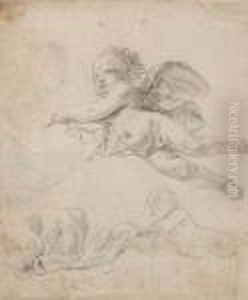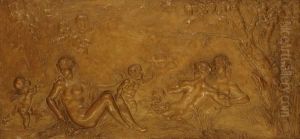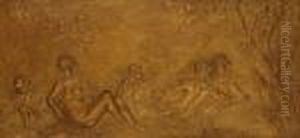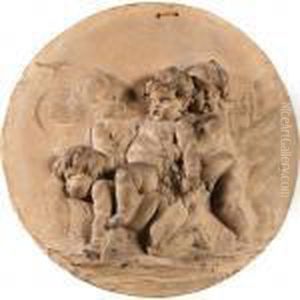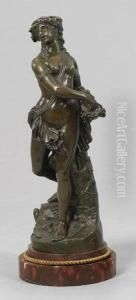Claude Michel, Dit Clodion Paintings
Claude Michel, commonly known as Clodion, was a French sculptor who represented the quintessence of the Rococo style in his work. He was born on December 20, 1738, in Nancy, France, into a family of sculptors. His early artistic training was under his uncle, Lambert-Sigisbert Adam, in Nancy before he moved to Paris to continue his studies. Eventually, Clodion won the prestigious Prix de Rome, a scholarship for young artists to study at the French Academy in Rome, which greatly influenced his artistic style.
Clodion's time in Rome, from 1762 to 1771, coincided with the discovery of the ancient cities of Pompeii and Herculaneum, which ignited his fascination with the classical antiquity. While in Rome, he was exposed to the works of the Renaissance and the ancient world, which greatly influenced his style. His sculptures often featured mythological themes, playful cherubs, and sensual female figures, reflecting the light-hearted and decorative nature of Rococo art.
Returning to Paris in the early 1770s, Clodion continued to create small-scale works that were highly sought after by private patrons, as well as larger pieces for public commissions. His terracotta sculptures, in particular, are noted for their lively forms and intricate details, capturing the fluidity and dynamic movement that became his signature style. Despite the turbulent times of the French Revolution and the subsequent shift in artistic tastes, Clodion managed to adapt his style to the more austere Neoclassicism that was gaining popularity.
Clodion's career spanned several important periods in French art, from the Rococo to the Neoclassical, and his work reflects the transitions and influences of these styles. Though his public commissions decreased during the Revolution, he continued to produce works for private collectors. His sculptures have been praised for their vivacity and charm, with a delicate sensuality that is emblematic of the Rococo period. Clodion died on March 29, 1814, in Paris, leaving behind a legacy of being one of the last great masters of Rococo sculpture.
